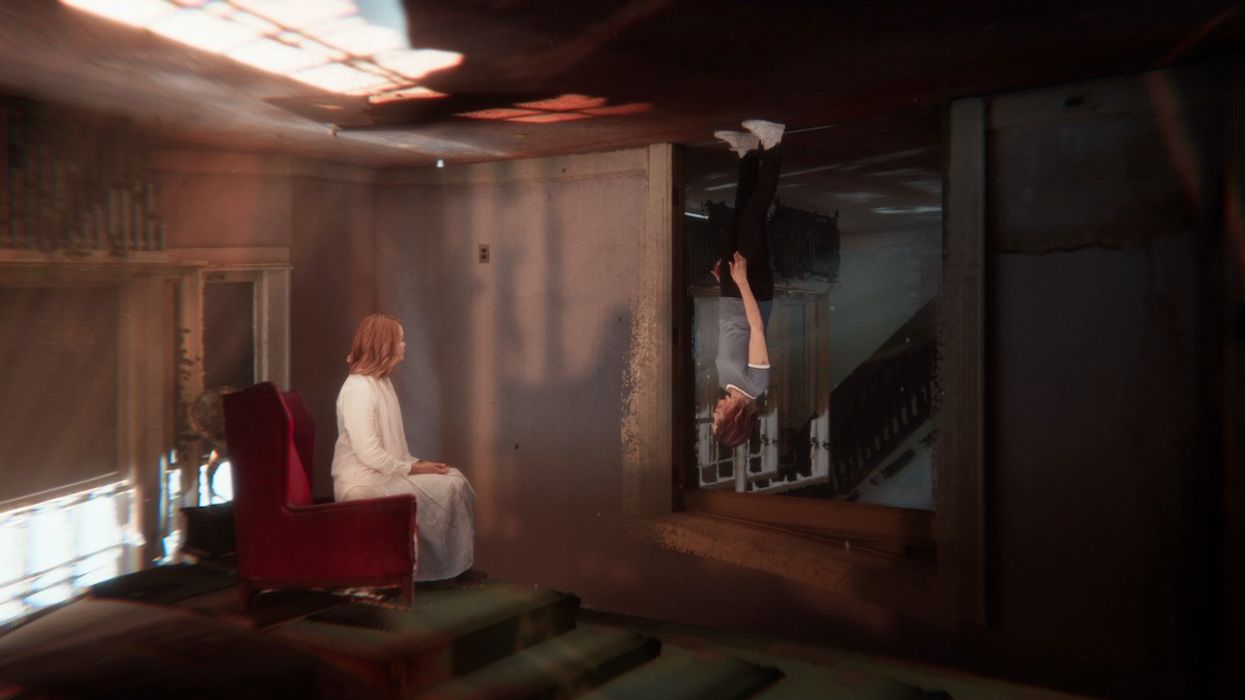What Can 200 Action Cams Do for Creating a Film in 3D Space?
Check out the latest in volumetric capture.

Director Neill Blomkamp’s newest sci-fi/horror project, Demonic, tells the story of a daughter who can digitize herself to go into her mother’s mind.
Blomkamp wanted a specific look to tell his tale, one that you can’t get with any garden variety cinema camera. In fact, Demonic was shot with over 200 action cameras recording simultaneously for certain scenes.
Why do you need so much coverage? Well, it’s to capture the 3D space in between.
Linus Tech Tips went to the set and studied Blomkamp's volumetric capture setup. Enjoy their behind-the-scenes look below.
The main idea behind this is a company called Volumetric Camera System (VCS), funded by Epic Games, which Blomkamp hired to eliminate the need for a special greenscreen while capturing a subject three-dimensionally.
The setup uses 200 Yi 4K action cameras arrayed in a circular array to capture every conceivable angle of an actor in the course of a scene. The cameras have custom firmware and a custom USB cable that enables the cameras to sync up and record with a touch of a single button. There are also two additional cameras in the array, whose sole function is to capture the image stereoscopically.
The camera setup also has a white background with black tape haphazardly arranged to create sharp edges for the computer’s artificial intelligence to identify each camera angle and its distance.
Yes, you heard it right—this setup uses AI to take every video angle, sync it up, and identify where the subject is in 3D space. From there, the algorithm uses some complicated math to identify the 3D space within the scene and eliminate everything else that isn’t within a halo around the subject.
The technique is similar to the process of “photogrammetry,” but with motion. Photogrammetry is a process of taking a series of images from every conceivable angle and then using a computer to translate those images into a “point cloud.” Using custom software, users can then craft a 3D model and print it.
This takes it to the next level by inserting motion into the equation.
Blomkamp can take the moving 3D model—in this case, the actor—and have it interact with a virtual or even real background setting to give the editor not only the option to put the subject in any background, but also move around the subject to capture a variety of angles from a single take.
But there is one drawback. The Yi 4K action cameras have a very wide field of view. About 155 degrees.
The result is that the farther away you get from the subject, the less “texture” data the camera can capture, even at 4K. On top of that, Blomkamp’s team is upscaling the image to 8K, making the data even more difficult to process. But that’s where the secondary higher-resolution camera array comes in. Those cameras are closer to the subject to capture more texture data for the point cloud, which translates into better image and texture resolution of the subject.
Want to have your mind blown even more? This setup captures up to 9,500 gigapixels per second, or 10 TB of data, for every 20 minutes of footage.
To process all that data, the filmmakers needed 24 networked computers, each packed with a 10-core i7 processor and a custom program that sorts the files and distributes them across the networked computers. All that data then gets processed using Unreal Engine to create the finished product.
Even then, however, the amount of data still isn’t enough to create a high-resolution cinematic image that will look good on the screen. Despite that, Blomkamp isn’t bothered by the technique’s shortcomings. In fact, he’s counting on it to create the kind of disjointed look and feel for the audience to experience.
Demonic is a horror film about demon possession, and this setup gives him the ideal overall dream-like look of his film—or should we say nightmare?

 No Film School's coverage of
No Film School's coverage of 









